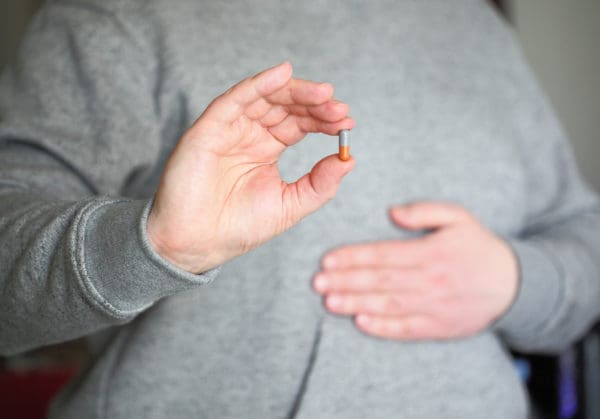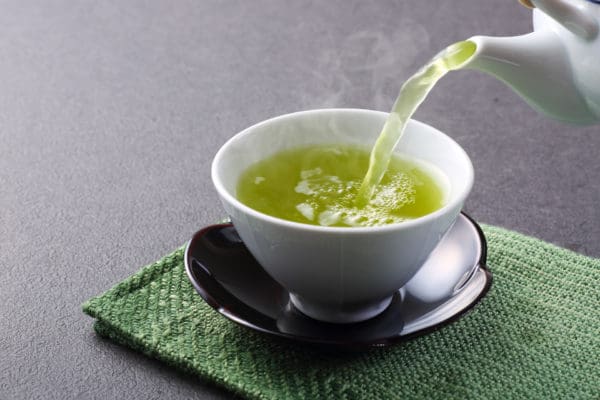The CDC recently announced that nearly 50 million Americans suffer from chronic pain. That’s 20% of the adult-age population. However, between the recent opioid crisis and concerns over pain medications, solving the challenge of chronic pain seems to get tougher each day. This short guide will show you 5 simple ways to ease chronic pain so you reclaim your life and do the things you want to do.
There’s no doubt that chronic pain conditions are challenging to your daily life, including your work life and personal life. It’s one thing to suffer an injury and expect it to heal. But when the pain doesn’t disappear, it can cause serious consequences that impact your physical and emotional well-being.
What is chronic pain?
Before exploring the different ways to ease chronic pain, it’s important to understand what distinguishes it from regular aches and pains or injuries. Chronic pain is classified as pain that recurs for 3 months. Typically it’s associated with long-term conditions such as cancer, diabetes and arthritis. Complications from surgery, long-term lower back pain and headaches also fall under this category.
Doctors generally tend to think of pain as either chronic and acute. Acute pain has a well-defined time course, whereas chronic pain can occur for months and even years. Chronic pain can also vary in intensity -from mild to severe- concurrently impacting your life in different ways.
How can you treat chronic pain?
There are a wide range of treatment options available depending on the condition that is causing your pain. More and more, patients are looking for different approaches to managing chronic pain and avoiding prescription pain medicine when possible.
Here are some of the best ways of easing chronic pain:
1) Take anti-inflammatory medication
Anti-inflammatories are the go-to when it comes to treating mild forms of chronic pain. They are typically used in managing conditions like arthritis, lower back pain and joint pain. These are common over the counter drugs like acetaminophen and ibuprofen, along with NSAIDS (Non-steroidal anti-inflammatory drugs) like aspirin. Your doctor will recommend a specific course of pain management that likely includes such medication.

Each one of these medicines typically has milder side effects compared to stronger medications. However, doctors may ask you to make changes to your diet while taking acetaminophen.
NSAIDs are among the most commonly prescribed medications by doctors. In randomized controlled trials, they have proven to be very effective in managing pain. There is even evidence to support that these types of medications decrease the risk of dementia and increase muscle function in addition to their pain-fighting benefits.
2) Get the right physical therapy
Everybody knows about the importance of exercise. However, fighting chronic pain means that more focus on building strong muscles is essential. Elderly individuals or those recovering from serious injuries should pursue a path of fitness and physical therapy that fit their special needs. This may include a more gradual approach to building muscle to avoid the risk of additional injuries.


Consult with your doctor to determine what types of exercises are suitable for you. In cases like arthritis, low-impact activities such as swimming and specifically designed cardio workouts are often advised. Working with a physical therapist can help you target key muscle groups. This will help not only fight pain but also increase your fitness and improve your mental health.
For example, research trials have shown that people suffering from lower back pain can see relief with targeted workout programs. These programs should last 45-60 minutes, 2-3 times per week. Participants were able to reduce pain within 6 weeks. Many reported low to no pain after 1 year.
3) Find relief naturally
Heating pads and ice packs are tried and true tactics, but many people are looking for natural options that are more outside the box. There are many great reasons for this. While generally considered safe, even the above-mentioned drugs can have side effects. Stronger prescription medications like opioids are often not only addictive but also have their own wide array of side effects. This is where you can find some help in natural pain relief.
One of the oldest herbal remedies dating from ancient Egypt is bark from white willow trees. In randomized controlled trials, white willow bark or Salicin— the pain fighting compound it contains— has been proven to be as effective as the most common NSAIDs.
In addition, green tea contains strong anti-inflammatory compounds that have been used in the treatment of arthritic conditions. It also has additional cognitive, cardiovascular and anti-cancer benefits. Doctors generally recommend 3-4 cups per day.

4) Make changes in your diet
Likewise, there are many changes you can make in your diet to manage chronic pain. Dietary changes are particularly important for those suffering from blood sugar dysfunctions such as diabetes. Nonetheless, many of the same foods that regulate blood sugar also to have strong pain relieving qualities. Of course, it is essential to minimize the intake of fatty, sugary foods, especially soft drinks.
In addition to this, one of the best simple ways to ease chronic pain is to look to superfoods. These include foods such as avocados, açaí and goji berries.
Don’t worry: you don’t have to break your wallet and buy every superfood on the planet. Follow 2 simple rules:
- avoid highly processed foods, meat and dairy
- look for affordable, nutritionally dense frozen and in-season fruits and vegetables
Consider foods high in carotenoids like carrots, mangos, plums and sweet potatoes that have strong anti-oxidative and analgesic properties and can help fight pain.

5) Create a healthy mix of physical activities
Physical therapy is one part of pain management, but so too is creating the right lifestyle. Aside from daily exercise, look to different ways of treating chronic pain such as yoga, pilates, massage therapy and going to a chiropractor. Such activities can allow you to focus on deep breathing and to alleviate muscle tension, both of which can help to ease painful conditions.
For example, over 90% of patients suffering from chronic lower back pain reported satisfaction from chiropractic treatment. They also reported using fewer drugs and avoiding surgery along with general improvements in quality of life after treatment.
If you decide to get your blood flowing with yoga, you’ve got pain relief research on your side. Several randomized controlled trials have shown the practice has pain-relieving effects.

The bottom line
There’s nothing fun about chronic pain. But that doesn’t mean you have to let it take over your life. A holistic approach may be ideal for you. Talk with your doctor about diet and lifestyle changes. Ask about a combination of both natural and other medications that can help minimize pain. By following these steps, you have everything you need to not just fight pain, but improve your total health and wellbeing.




